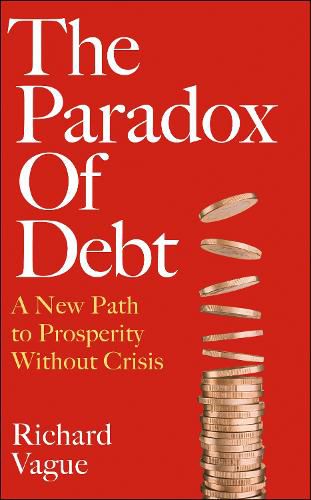Readings Newsletter
Become a Readings Member to make your shopping experience even easier.
Sign in or sign up for free!
You’re not far away from qualifying for FREE standard shipping within Australia
You’ve qualified for FREE standard shipping within Australia
The cart is loading…






When we talk about debt and its impact on our economy, we almost always mean ‘government debt’. However, this is only a small part of the picture: individuals, private firms and households owe trillions, and these private debts are vital to understanding the economy.
In this iconoclastic book, Richard Vague examines the assets, liabilities and incomes of the entire country, private and public sector, to reveal its net worth. His holistic analysis shows that the real factor that drives both financial crises and spiralling inequality - but also, paradoxically, economic growth - is ever rising private debt. The paradox is that while debt is essential and our economy relies on it, it also brings instability unless it is periodically deleveraged - and that is very hard to do. It can, however, be carefully managed, and Vague ends the book by showing how to do so in policy areas ranging from trade and housing to financial policy and student debt.
Underpinned by pioneering data analysis and the author’s lifetime of experience in the financial world, no-one who wants to understand the deep, underlying dynamics of American economy can afford to miss this book.
$9.00 standard shipping within Australia
FREE standard shipping within Australia for orders over $100.00
Express & International shipping calculated at checkout
When we talk about debt and its impact on our economy, we almost always mean ‘government debt’. However, this is only a small part of the picture: individuals, private firms and households owe trillions, and these private debts are vital to understanding the economy.
In this iconoclastic book, Richard Vague examines the assets, liabilities and incomes of the entire country, private and public sector, to reveal its net worth. His holistic analysis shows that the real factor that drives both financial crises and spiralling inequality - but also, paradoxically, economic growth - is ever rising private debt. The paradox is that while debt is essential and our economy relies on it, it also brings instability unless it is periodically deleveraged - and that is very hard to do. It can, however, be carefully managed, and Vague ends the book by showing how to do so in policy areas ranging from trade and housing to financial policy and student debt.
Underpinned by pioneering data analysis and the author’s lifetime of experience in the financial world, no-one who wants to understand the deep, underlying dynamics of American economy can afford to miss this book.